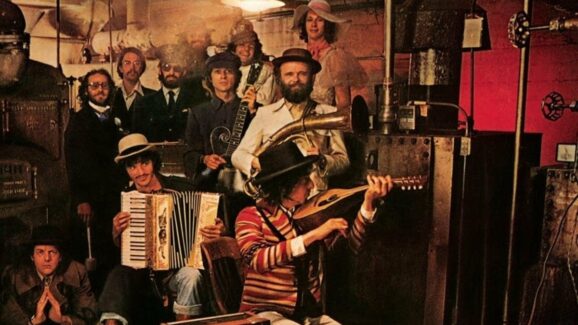 Emily Reo’s albums are frequently described as kaleidoscopic, her densely layered and warped pop creations blossoming and bursting with complex twists and fiery vocals, her classically trained voice expanding and robotically folding back on itself through deftly-applied vocoder. On her third full-length, Only You Can See It (Carpark Records), Reo gives this bright kaleidoscope treatment to some of her most serious, heavy topics yet – she creates an irrepressible treasure out of her own struggles with mental health (depression, anxiety, OCD), illness, death, loss, heartbreak, sexual harassment and degradation – and it completely works. The kaleidoscope’s spectacle abides whether the images are formed from glass beads and glitter or shards of rotten teeth and bug carcasses.
Emily Reo’s albums are frequently described as kaleidoscopic, her densely layered and warped pop creations blossoming and bursting with complex twists and fiery vocals, her classically trained voice expanding and robotically folding back on itself through deftly-applied vocoder. On her third full-length, Only You Can See It (Carpark Records), Reo gives this bright kaleidoscope treatment to some of her most serious, heavy topics yet – she creates an irrepressible treasure out of her own struggles with mental health (depression, anxiety, OCD), illness, death, loss, heartbreak, sexual harassment and degradation – and it completely works. The kaleidoscope’s spectacle abides whether the images are formed from glass beads and glitter or shards of rotten teeth and bug carcasses.
Meanwhile, the central metaphor for the album – summed up tidily in the title Only You Can See It, which references the canonically revolving lyrics of haunting, lonely, majestic closing track “In Theaters” – is that of scores of solitary individuals alone in movie theaters witnessing their lives playing out on movie screens, solely privy to all of the struggles, challenges, contextualized choices and experiences contained therein. No one else can truly know. Only you can see it.
“I’m so scared to die I am not living
every night I’m stuck in my room
every night I’m sick in my room- “Ghosting”
“Ghosting,” Reo’s most personal song yet, addresses the isolation that mental illness can induce. That feeling is likely pervasive. 300 million people suffer from depression alone, according to the World Health Organization, and almost 20% of American adults struggle with some form of anxiety. “Ghosting,” with its sticky sparkling hooks, is a reminder of that shared experience, grabbing on like a tether in the void – a reminder that at least we’re all feeling isolated together.
“Sometimes it feels like I’m swimming with sharks
Just reading books by myself in the park
And when I’m walking alone after dark
I don’t want your yell, don’t shout me out” – “Strawberry”
An anthemic clap-back to all the guys that request a smile, lead single “Strawberry” is a prime example of the relatability of Reo’s struggles – we might all be living these experiences in isolation, but “I load into the show / You ask if I’m somebody’s girlfriend” is a near-universal occurrence in the life of every female musician that I know. (Oh yeah, I’m definitely hauling this kick drum into the venue for my boyfriend.) Reo undoubtedly has dozens of songs-worth of lyrical fodder at her disposal, whether from playing her own music on countless tours, as a recurring member of Sad13’s touring band or simply as a female who is required to regularly navigate the internet.
“Time cast a spell on me, burn down the trees
Make me believe, feel something
I can’t feel anything” – “Spell”
The ghostly, glitchy, warbling and whispering “Counterspell” represents the overcoming of the illness referenced in Reo’s 2016 single “Spell” (Orchid Tapes), repurposing the earlier track’s vocals and turning around its description of isolation and numbness which, according to the album’s press release, is “to show ‘how anything can be reversed.’”
“Balloon” brings to mind Tegan and Sara in the vocal intonation and Imogen Heap in its generous use of vocoder. It’s a victorious romp with a churning melody and rolling toms that champions self-reliance in relationships.
Reo’s debut full-length Minha Gatinha (self-released in 2009) was a lo-fi home-recording, and the follow-up album Olive Juice (Elestial Sound, 2013) was recorded entirely in a studio. Reo wrote, recorded, arranged, produced and mixed Only You Can See It in multiple studios and locations, including her own Brooklyn apartment, over a span of five years. The album boasts a solid list of collaborators, from Warren Hildebrand (Foxes in Fiction) to Julian Fader (Ava Luna, Gravesend Recordings). The tracks were recorded with the help of a live band for the first time, including Jack Greenleaf and Felix Walworth, and incorporates additional instruments like live drums, guitar, bass, piano, synth, harp, theremin and sax (which is especially satisfying on “Fleur”).
Throughout the album, Reo creates something sparkling, effervescent and downright uplifting out of some of her darkest and most difficult experiences. The depression and anxiety are still present, lurking in lyrical couplets and haunting some of the broodier corners of her songwriting (like in “In Theaters” and “Counterspell”), but this album feels like a talisman of joy.
Hopefully, Reo’s next move (if her life path is still in line with her 2016 interview with Rookie Magazine) will be to start a home renovation business, which makes total sense – she could build something magical out of even the grimmest dump.
Photo by Brian Vu









